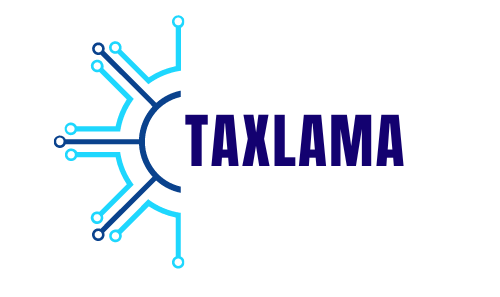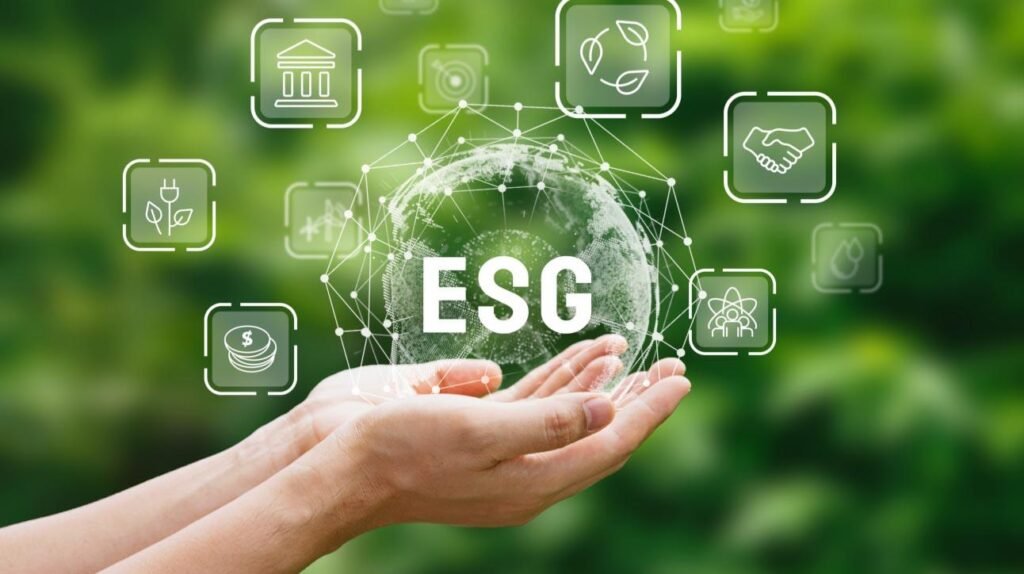In today’s rapidly evolving business landscape, Environmental, Social, and Governance (ESG) considerations are no longer just a buzzword—they’re essential to sustainable growth and corporate reputation. As companies strive to meet the increasing demands for transparency and responsibility, effective collaboration with your ESG advisory team becomes crucial. But how do you ensure that this partnership is not only productive but also dynamic? In this post, we’ll explore the top strategies for engaging with your ESG advisors effectively—transforming what could be a transactional relationship into a synergistic alliance that drives meaningful impact. Whether you’re a seasoned executive or new to the ESG game, these insights will empower you to harness the full potential of your advisory team and elevate your organization’s commitment to responsible practices. Let’s dive in!
Introduction to ESG Advisory Teams
In today’s world, the importance of Environmental, Social, and Governance (ESG) factors is undeniable. As businesses strive to meet sustainability goals and ethical standards, ESG advisory teams have emerged as invaluable partners in this journey. These specialized groups are equipped with diverse expertise that can help organizations navigate the complex landscape of responsible business practices. However, for these teams to deliver their best work, effective engagement is crucial.
How can you make sure your collaborations with an ESG advisory team yield meaningful results? By understanding their role and fostering strong communication channels, you set the stage for success. Let’s dive into some top strategies that will enhance engagement with your ESG advisory team and drive impactful outcomes for your organization.
Understanding Your Team’s Expertise and Role
Understanding the expertise and role of your ESG advisory team is crucial for effective collaboration. Every member brings unique skills, knowledge, and insights that can enhance your strategy.
Take time to explore their backgrounds. Some may have deep experience in sustainability practices, while others might excel in social governance or regulatory compliance. Recognizing these strengths will help you leverage their capabilities effectively.
Encourage open discussions about each team member’s expertise. This transparency fosters trust and creates an environment where everyone feels valued.
Ask questions about past projects they’ve worked on. Learning from their experiences can provide new perspectives that benefit your initiatives.
Ultimately, a well-rounded understanding of your team’s roles enables you to maximize contributions toward shared goals. When you value diverse talents within the group, engagement naturally flourishes.
Establishing Clear Communication Channels
Effective communication is vital for any ESG advisory team. Establishing clear channels can significantly enhance collaboration and understanding.
Start by identifying preferred communication methods. Some team members might prefer emails, while others lean toward instant messaging or video calls. Choose a combination that suits everyone’s style.
Set regular meeting times to discuss ongoing projects and updates. This creates predictability and ensures that all voices are heard consistently.
Encourage open dialogue by fostering an environment where questions are welcomed. When team members feel comfortable sharing their thoughts, the quality of discussions improves substantially.
Utilize project management tools to keep everyone on the same page. These platforms help track progress and ensure transparency in tasks assigned to each member.
Regularly assess the effectiveness of your communication channels. Be ready to adapt if certain methods aren’t yielding productive results, ensuring your ESG advisory team’s interactions remain efficient and impactful.
Setting Goals and Expectations
Setting clear goals and expectations is crucial for your ESG advisory team. It provides a roadmap for everyone involved. When team members understand their roles, they can focus on delivering results.
Start by defining specific objectives. What does success look like? Outline measurable targets that align with your organization’s overall vision. This clarity helps in maintaining momentum and motivation.
Involve your advisors in the goal-setting process. Their insights can shape realistic expectations while fostering ownership over outcomes. Collaborative discussions lead to stronger commitments.
Regularly revisit these goals to ensure alignment as circumstances change. Flexibility allows adjustments without losing sight of the ultimate aim.
Communicate priorities clearly, ensuring every member knows what’s at stake. Transparency builds trust and encourages open dialogue about progress and challenges along the way, creating a supportive environment focused on growth.
Regular Check-ins and Feedback Sessions
Regular check-ins and feedback sessions are vital for maintaining momentum within your ESG advisory team. These touchpoints foster open dialogue about ongoing projects and initiatives.
When you schedule these meetings, ensure they are consistent but flexible enough to adapt to the team’s needs. A structured agenda can keep discussions focused while allowing room for emerging topics.
Feedback is two-way; encourage your advisors to share insights on leadership decisions as well. This exchange builds trust and enhances collaboration.
Utilizing surveys or quick polls after each session can help gauge effectiveness and areas for improvement. Consider incorporating a few minutes at the end of each meeting specifically dedicated to gathering thoughts from everyone involved.
By prioritizing these interactions, you not only refine strategies but also cultivate a culture of continuous learning within your ESG advisory team.
Utilizing Technology for Efficient Collaboration
Harnessing technology can transform the way you collaborate with your ESG advisory team. Cloud-based platforms like Google Workspace or Microsoft Teams enable real-time document sharing and editing, ensuring everyone stays on the same page.
Video conferencing tools such as Zoom or Microsoft Teams facilitate face-to-face interactions, regardless of geographical barriers. This fosters personal connections and enhances understanding among team members.
Project management software like Asana or Trello allows for organized task assignments and tracking progress efficiently. These tools help clarify responsibilities while providing visibility into project timelines.
Additionally, data analytics platforms can aggregate insights from various sources. This empowers your ESG advisory team to make informed decisions grounded in solid evidence.
Embracing these technologies not only streamlines workflows but also boosts overall engagement within your team, paving the way for effective collaboration on complex ESG initiatives.
Incorporating Diverse Perspectives
Diversity within your ESG advisory team is a powerful asset. Bringing together individuals from various backgrounds fosters innovative thinking and creative solutions.
Encourage team members to share their unique viewpoints. This can lead to richer discussions and more comprehensive strategies. Each perspective adds depth, whether it’s cultural insights or industry-specific knowledge.
Create an inclusive environment where everyone feels comfortable voicing their ideas. Use brainstorming sessions as opportunities for collaboration, allowing different voices to shape the conversation.
Additionally, consider incorporating external experts when relevant. Their fresh insights can challenge existing assumptions and broaden your understanding of complex issues related to environmental, social, and governance factors.
Embracing diversity isn’t just about representation; it’s also about leveraging varied experiences for better decision-making. The result? A more robust ESG strategy that resonates across multiple stakeholder groups while driving meaningful change in your organization.
Addressing Conflicts and Challenges
Conflicts may arise within your ESG advisory team due to differing opinions or priorities. Acknowledging these challenges is the first step toward resolution.
Encourage open dialogue where all members feel comfortable voicing their concerns. This creates a safe space for collaboration and understanding. Listening actively can often diffuse tension before it escalates.
Utilize conflict-resolution techniques, such as mediation, to guide discussions constructively. This approach fosters mutual respect and helps clarify misunderstandings.
Recognizing diverse perspectives strengthens decision-making processes. Each viewpoint brings unique insights that can lead to innovative solutions.
Establishing a culture of transparency ensures everyone knows how decisions are made. Keep your team informed about changes in strategy or direction, which reduces uncertainty and builds trust among members.
Emphasizing shared goals reminds everyone why they are part of the team, helping focus efforts on collective success rather than individual disagreements.
Celebrating Successes and Continuing Growth
Recognizing the achievements of your ESG advisory team fosters motivation and loyalty. Celebrate milestones, no matter how small. A simple acknowledgment can go a long way in boosting morale.
Consider hosting regular recognition events or virtual shout-outs. Share success stories across your organization to highlight the positive impact of their efforts. This not only reinforces the value of their work but also inspires others.
Growth doesn’t stop at celebration; it should propel you forward. Encourage ongoing development through continuous learning opportunities and workshops tailored to emerging trends in ESG.
Fostering an environment where everyone feels valued creates a culture of collaboration. When team members know that their contributions are appreciated, they’re more likely to innovate and push boundaries together.
Make time for reflection as well. Discuss what worked well and areas for improvement after each project or initiative, ensuring that growth is both recognized and pursued diligently.
Conclusion: The Importance of Effective Engagement with Your ESG Advisory Team
Effective engagement with your ESG advisory team is crucial for achieving sustainable outcomes. A well-functioning advisory team can provide insights that drive meaningful change within your organization.
When you actively understand their expertise and foster open communication, the relationship strengthens. Setting clear goals helps everyone stay aligned on objectives, while regular check-ins ensure ongoing progress.
Technology plays a pivotal role in facilitating collaboration, making it easier to share ideas and resources. Embracing diverse perspectives adds depth to discussions, leading to innovative solutions. Addressing conflicts promptly prevents misunderstandings from escalating and fosters a healthier working environment.
Celebrating successes—big or small—instills motivation within the team and reinforces commitment to ESG principles. Together, these strategies create an atmosphere where creativity thrives and sustainability initiatives flourish.
Engaging effectively with your ESG advisory team not only enhances performance but also positions your organization as a leader in responsible business practices. This partnership could be the key ingredient for long-term success in today’s evolving market landscape.




